Keener13.com Turns 15!
 In June of 2002, Steve Schram and Scott Westerman were doing what they loved best: Staying up late and listening to WKNR airchecks. It was a habit that began when they first met at Michigan State University in the ’70s, but, as individuals their love for Keener had taken root a decade earlier, on that October evening in 1963 when WKMH took on new call letters and a new format.
In June of 2002, Steve Schram and Scott Westerman were doing what they loved best: Staying up late and listening to WKNR airchecks. It was a habit that began when they first met at Michigan State University in the ’70s, but, as individuals their love for Keener had taken root a decade earlier, on that October evening in 1963 when WKMH took on new call letters and a new format.
They didn’t know it then, but WKNR and the people who worked there, would set the standard for every future step in their professional careers. “How would Keener have done it,” became the question they would ask themselves as their own broadcasting adventures took shape. And now, as the clock passed 2AM, one of them, neither can remember which, came up with the idea of a creating website celebrating their favorite Detroit radio station.
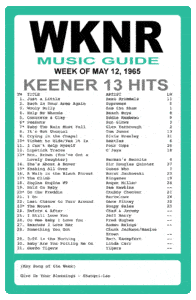 It didn’t take long to pull together the beginnings of what would become the largest collection of Keener memorabilia in existence. And on July 1, Keener13.com launched.
It didn’t take long to pull together the beginnings of what would become the largest collection of Keener memorabilia in existence. And on July 1, Keener13.com launched.
Since then, virtually every significant personality heard on WKNR has contributed something to the collection. The aircheck archive has been a source for researchers studying Detroit’s 60s history as Keener reflected it. Keener13.com has been referenced in television documentaries and in Andru Reeve’s famous, Turn Me On Dead Man – The Beatles and Paul McCartney Death Hoax. We’ve amassed a nearly complete collection of every WKNR Music Guide. There’s the “Inside Keener” library of weekly staff memos that chronicled the comings and goings. And the Keener photo gallery is filled with the famous faces we associated with the voices we knew so well.
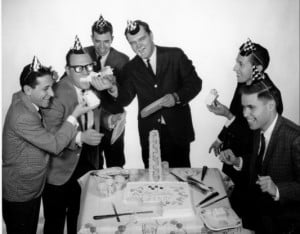 This website has spawned a number of celebratory events. For two summers, we were honored to produce special broadcasts on Keeners 1310 Khz frequency during the Woodward Dream Cruise. A collectable series of Keener Podcasts were created. Keener personalities were honored celebrities in a series of Detroit Radio Reunions over the years. And in the summer of 2014, we were proud to participate in a reunion of many of the original Keener Keymen in New York City.
This website has spawned a number of celebratory events. For two summers, we were honored to produce special broadcasts on Keeners 1310 Khz frequency during the Woodward Dream Cruise. A collectable series of Keener Podcasts were created. Keener personalities were honored celebrities in a series of Detroit Radio Reunions over the years. And in the summer of 2014, we were proud to participate in a reunion of many of the original Keener Keymen in New York City.
Along the way, Steve and Scott have occasionally taken to this space to mark key events in the lives of the Keener generation. We’ve said goodbye to some who have left us too soon, remembered moments in popular culture that shaped our attitudes about the world around us and shared the backstory on some of the personalities that are indelibly connected to the soundtrack of our lives.
 6 years ago, Keener13.com surpassed the lifetime of WKNR itself. We marked that event by launching the Keener Facebook Group and entering into the world of social media that would have been a significant, audience participation dimension of the station’s personality, had it existed back in the day.
6 years ago, Keener13.com surpassed the lifetime of WKNR itself. We marked that event by launching the Keener Facebook Group and entering into the world of social media that would have been a significant, audience participation dimension of the station’s personality, had it existed back in the day.

The Keener13.com project has been a labor of love, a reminder of how radio, at it’s best, could connect with an audience in an affirming, life changing way. A common statement made by everyone we’ve talked to who was connected with WKNR was that it was a defining moment in their lives. We share that sentiment.
And at every turn, we have been grateful for the essential contributions of people like you, folks who were touched by the Keener Magic and were willing to share your stories with us.
Thank you, for a decade and a half of great memories, and for making every season, Keener season!
Remebering Swingin Sweeney
By Scott Westerman curator@keener13.org
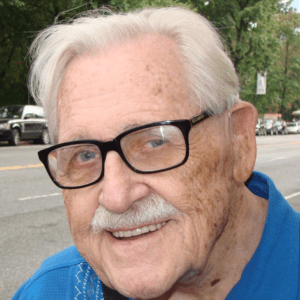 The Red Eye Grille straddles the northwest corner of 7th avenue and 59th street in New York City. It’s just blocks from the Ed Sullivan Theater where Letterman and Colbert performed and a short walk to the heart of Broadway. In the summer of 2014 it was the home for a reunion of many of the original Keener Keymen. In attendance were Bob Green, Jerry Goodwin, Gary Stevens and Robin Seymour, personalities from the dawn of WKNR’s notoriety. Scott Regen came soon after. John Meagher and Jim Brooker represented Contact News with Pat St. John and Jim Kerr representing the long tail of the Keener legend. Frank Maruca joined via Skype. At the center of the action was the man who found the venue, the host and sometime master of ceremonies, Frank “Swingin” Sweeney.
The Red Eye Grille straddles the northwest corner of 7th avenue and 59th street in New York City. It’s just blocks from the Ed Sullivan Theater where Letterman and Colbert performed and a short walk to the heart of Broadway. In the summer of 2014 it was the home for a reunion of many of the original Keener Keymen. In attendance were Bob Green, Jerry Goodwin, Gary Stevens and Robin Seymour, personalities from the dawn of WKNR’s notoriety. Scott Regen came soon after. John Meagher and Jim Brooker represented Contact News with Pat St. John and Jim Kerr representing the long tail of the Keener legend. Frank Maruca joined via Skype. At the center of the action was the man who found the venue, the host and sometime master of ceremonies, Frank “Swingin” Sweeney.
It’s now almost two years later as I meet Frank and his long time companion, Stephanie for lunch at that same hallowed location. It’s clear that he’s royalty here, warmly welcomed by the staff, who exude genuine love for an amazing spirit who became Keener’s second morning man in the wake of Mort Crowley’s dramatic departure. Continue reading “Remebering Swingin Sweeney” →
The Keener Top 113 All Time Leading Hits 1956-1968
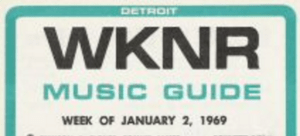 Remember how Keener used to play special programming on holiday weekends? Rock-u-mentaries were common on Top 40 stations back in the day. The History of Rock and Roll, Aural histories of the Beatles, the Stones, Elvis, and Motown, each of these topics were fodder for extended attention, especially over those long weekends when the DJs took time off to be with their families.
Remember how Keener used to play special programming on holiday weekends? Rock-u-mentaries were common on Top 40 stations back in the day. The History of Rock and Roll, Aural histories of the Beatles, the Stones, Elvis, and Motown, each of these topics were fodder for extended attention, especially over those long weekends when the DJs took time off to be with their families.
There were also periodic surveys of “The Greatest Hits of All Time”. On January 1st 1969, WKNR released their list of the “Leading 113 All Time Hits – 1956-1968″. Time and the fading of memory has dimmed the process by which the station came up with the list, but it includes some of the most memorable music of the rock era up to that time. A special, elongated WKNR Music Guide was created to mark the event. It’s become a collector’s item among avid Keenerfans. Here’s the list as it was first heard on New Year’s Day, 1969. Continue reading “The Keener Top 113 All Time Leading Hits 1956-1968” →
Yes, we really did listen to music that way..
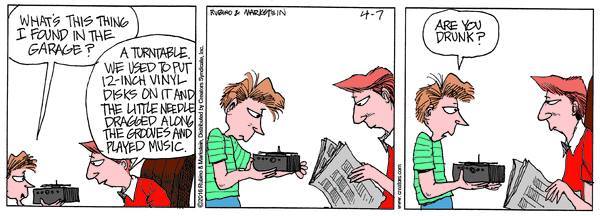 Some of us may have actually had an encounter like this. In an age where music magically appears on a smart device, it’s hard for some youngsters to believe that, once upon a time, we spent our money on expensive electronics that used a revolving flat plastic disc to render our favorite songs.
Some of us may have actually had an encounter like this. In an age where music magically appears on a smart device, it’s hard for some youngsters to believe that, once upon a time, we spent our money on expensive electronics that used a revolving flat plastic disc to render our favorite songs.
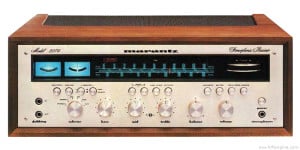
If your experience was like many in the Keener generation, you probably started out with a portable record player, perhaps graduated to an integrated stereo system where all the components were in one box and then moved up to a component arrangement that was worth more than the car you drove. Names like Marantz, The Fisher, Sansui & McIntosh (not the computer) were coveted brands. Often times, we’d put together a receiver, tape deck, turntable and speakers that were each made by different companies. And the bigger the better! How cool you were sometimes paralleled the size of your speaker cabinets and whether or not you had one of those way cool reel to reel tape decks.
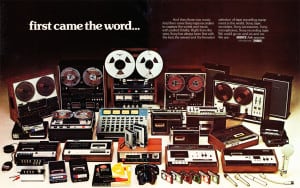
Mix tapes were carefully crafted back then, created from a thoughtful review of our collection of 33 1/3 albums and the 45 rpm singles we bought at Harmony House after consulting the latest WKNR Music Guide. In the car, we might have sprung for electronics from Micky Shorr’s or Michigan Mobile Radio to replace the AM-only receivers with the pristine sounds of FM. Some of the more adventurous among us might even have added reverb units to simulate stereo sound with the often static prone AM signals that were the mainstay of our youth. Along the evolutionary way, 8 track tapes had a brief vogue. Even though they played at only 1 7/8 inches per second, versus the 7 1/2 ips format that was the broadcast standard, we put up with the artifacts, just to be able to listen to our favorite albums on the road.

As the Keener era came to a close, cassettes had come to the fore and it was only a matter of time until the machines that played them became convenient handheld devices, a precursor to today’s iPods and smart phones. Most of us also owned one cassette recorder that was attached to our stereo stack. Mix tapes became more than just a way to listen to our favorite tunes. They could also be love letters. How many of us created mix tapes for our significant others in the hope of deepening the relationship? As John Cusack’s character in the film High Fidelity put it, “The making of a good compilation tape is a very subtle art. Many do’s and don’ts. First of all you’re using someone else’s poetry to express how you feel. This is a delicate thing.”
Perhaps Rob Sheffield, writing in Love Is a Mix Tape said it best. “The times you lived through, the people you shared those times with — nothing brings it all to life like an old mix tape. It does a better job of storing up memories than actual brain tissue can do. Every mix tape tells a story. Put them together, and they can add up to the story of a life.”
Beatles on a Train
On March 11, 1964 The Beatles film the “I Should Have Known Better” segment of the film, A Hard Day’s Night, on a London soundstage configured to look like the inside of a railroad train. Here’s the segment (subtitled en Espanol).
Sunday Brunch with Sonny and Cher
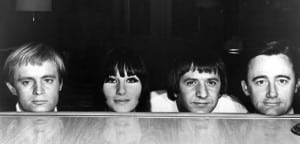 On March 10, 1967 James Bond and the secret agent craze are at their peak. Sonny and Cher guest star as “Jerry and Ramona” on the “The Hot Number Affair” episode of NBC-TV’s The Man From U.N.C.L.E. The pop duo play garment-center employees who are swept up in a frantic quest for a THRUSH world-conquest report, hidden in the pattern of a dress. George Tobias, Ned Glass and Kelton Garwood co-star.
On March 10, 1967 James Bond and the secret agent craze are at their peak. Sonny and Cher guest star as “Jerry and Ramona” on the “The Hot Number Affair” episode of NBC-TV’s The Man From U.N.C.L.E. The pop duo play garment-center employees who are swept up in a frantic quest for a THRUSH world-conquest report, hidden in the pattern of a dress. George Tobias, Ned Glass and Kelton Garwood co-star.
Sonny and Cher’s “The Beat Goes On” had just finished a WKNR Music Guide chart run the previous month, peaking at number 5. What’s not generally known is that the iconic bass line that gave the song it’s power was an idea contributed on the fly by Wrecking Crew legend Carol Kaye. Here’s the story as told by Carol, herself.
Happy Birthday, Tom Lehrer
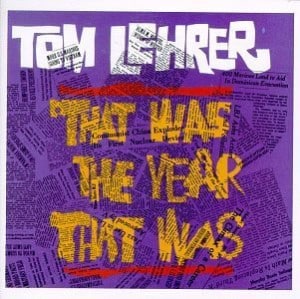 Dr. Demento called him, “the best musical satirist of the twentieth century. Randy Newman and “Weird Al” Yankovic are huge fans. His 1965 LP with music from the NBC TV series “That Was the Week That Was” is a prized possession for many Keener fans who were discovering their social consciousness.
Dr. Demento called him, “the best musical satirist of the twentieth century. Randy Newman and “Weird Al” Yankovic are huge fans. His 1965 LP with music from the NBC TV series “That Was the Week That Was” is a prized possession for many Keener fans who were discovering their social consciousness.
Tom Lehrer was born on March 10, 1928. He was a mathematician and political scientist, teaching during his long career at MIT and UC Santa Clara. But he could also play the piano, had a love for show tunes and a razor sharp wit.
During his brief musical career, he was one of the foremost satirists of the time, writing sharp, topical tunes about everything from racism and the atomic bomb to religion and pornography. He wrote for the American version of the BBC series, “That Was the Week That Was” during it’s brief prime, from January of 1964 through May of 1965.
It’s unclear if any of his stuff ever made it to the WKNR airwaves, but if you came of age in the mid-60s, it’s likely you not only heard Tom Lehrer’s stuff, but you might also still have at least one of his albums among your LP collection.
Here’s Tom’s take on “The New Math”.
Opening Day!

Did you know: That the Detroit Tigers flagship station was once WKNR’s predecessor, WKMH? Station owner, Fred Knorr was also part owner of the Tigers and during the last years of his life Keener was the Motor City home for Tiger Baseball.
Who among us who grew up in Detroit in the Keener era can forget Tiger Stadium? For many, it’s etched into the screenplay of our youth, the sun beating down on our bleacher seats, the smell of Hygrade Ballpark Franks and Stroh’s Beer, the green grass mixed with the rich brown infield earth, and the pitcher’s mound, only 10 inches above grade but seeming to tower over the proceedings as the batter at home plate stared down the men whose rocket arms and ice water nerves could mean the difference between victory and defeat.
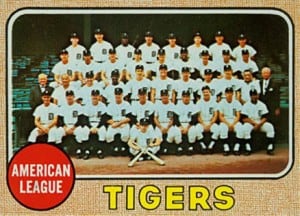
That Hemingway sentence only scratches the surface of what comes to mind when we think about baseball in The Motor City. Depending on the decade, our heroes had names like Kaline, Cash, Freehan, Lolich, Horton, Brown, McLain, Trammel, Gibson, Morris, Fidrych, Smith and Anderson. And of course, there was always Ernie. He was the voice of Spring, a unique, comforting presence that could be heard in the air on warm summer evenings, painting word pictures that flowed out of transistor radios on pontoon boats coursing across Houghton Lake, describing the highs and lows as we watched the ebb and flow of a baseball team that was as much a part of who we were then as was the radio stations that provided the soundtrack of our lives.
The Tiger’s hall of fame play-by-play announcer may have cut his teeth in Atlanta and New York, but Ernie Harwell will forever be remembered as the voice of Detroit. In fact, it wouldn’t be opening day without a recitation of the poem Ernie intoned at the start of every season. Our Tigers play, today in the friendly confines of the beautiful Comerica Park. Tiger Stadium was razed nearly ten years to the day after the last out was called in September of 1999. But for the Keener generation, the edifice at the corner of Michigan and Trumbull lives on in our memories. And wherever you may be on opening day, you can be certain that “the voice of the turtle” will be heard again, wherever the Tigers call home.
And here’s an additional treat, the final inning of Game 7 of the 1968 World Series, followed by Ernie’s post game locker room interviews. Where were you when the Tigers earned the World Championship?
Petula Clark’s historic television moment
On this date in 1968, “Petula”, airs on NBC. Petula Clark’s one and only TV special features guest star Harry Belafonte performing a duet of the British pop sensation’s antiwar song, “On The Path Of Glory.” During taping, Clark spontaneously reached and touched Belafonte’s arm. This brought a protest from the show’s sponsor, Chrysler Corporation, who feared that the act would upset southern viewers.
To ensure that the gesture would air, Petula and her executive producer husband, Claude Wolff, destroy all other takes of the duet. It becomes the first interracial contact to be broadcast on American television.
Another danger of decadent capitalism: The Twist
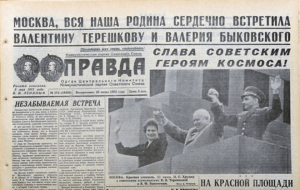 On this date in 1963, Russia’s official newspaper, Pravda, warns Soviet teens of the decadent dangers of the new “twist” dance craze. Chubby Checker’s biggest chart success was a worldwide sensation and was regularly heard behind the Iron Curtain on Radio Free Europe. Like most things your parents tell tell you not to do, the twist was most certainly practiced all across the Soviet bloc, further amplified by Checker’s follow up, “Let’s Twist Again, Like We Did Last Summer”. Dick Clark’s American Bandstand program, featured the former Ernest Evans performing his signature song. Here’s video of that special moment.
On this date in 1963, Russia’s official newspaper, Pravda, warns Soviet teens of the decadent dangers of the new “twist” dance craze. Chubby Checker’s biggest chart success was a worldwide sensation and was regularly heard behind the Iron Curtain on Radio Free Europe. Like most things your parents tell tell you not to do, the twist was most certainly practiced all across the Soviet bloc, further amplified by Checker’s follow up, “Let’s Twist Again, Like We Did Last Summer”. Dick Clark’s American Bandstand program, featured the former Ernest Evans performing his signature song. Here’s video of that special moment.
Look Homeward Angel – The Monarchs
This week in 1964, “Look Homeward Angel” by the Monarchs was at Number 1 on the WKNR Music Guide. The Monarchs formed in Louisville, Kentucky, in 1961. Their one national hit reached number 47 on the Billboard Hot 100, but as was so often the case back in the day when radio stations were locally programmed, their single caught on with Detroit audiences, supplanting the Beatles in the top spot on the survey. With a number of changes in personnel over the years, the band still performs today in the Louisville area.
Our Youtube link is notable for another feature, “Diane Sargent’s” custom record sticker, popular during the WKNR era as a way of making sure that the records you may have taken to a local sock hop came home with you.
https://www.youtube.com/watch?v=HGshk3P4Osc
Keenerland Updates
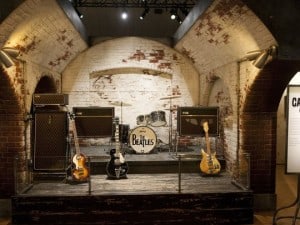 The Freep is reporting that a new Beatles exhibition is headed to Keenerland. “”The Magical History Tour: A Beatles Memorabilia Exhibition,” will run April 30-Sept. 18 at the Henry Ford Museum, “featuring artifacts and galleries tracing the Beatles’ trajectory from the band’s Liverpool origins up through the post-breakup days… Visitors can tour a mock-up of Liverpool’s Cavern Club and make custom mixes of tracks recorded at Abbey Road Studios.”
The Freep is reporting that a new Beatles exhibition is headed to Keenerland. “”The Magical History Tour: A Beatles Memorabilia Exhibition,” will run April 30-Sept. 18 at the Henry Ford Museum, “featuring artifacts and galleries tracing the Beatles’ trajectory from the band’s Liverpool origins up through the post-breakup days… Visitors can tour a mock-up of Liverpool’s Cavern Club and make custom mixes of tracks recorded at Abbey Road Studios.”
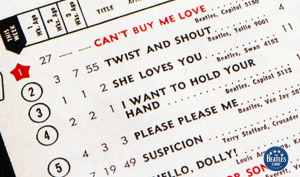 Speaking of the Fab Four, it was April 4th, 1964 that the band held down the top 4 spots on the Billboard Hot 100. In order from number one, “Can’t Buy Me Love”, “Twist and Shout”, “She Loves You”, “I Want to Hold Your Hand” and “Please Please Me.” Keener was ahead of the Beatle curve that week. The Top 5 on the WKNR Music Guide included were:
Speaking of the Fab Four, it was April 4th, 1964 that the band held down the top 4 spots on the Billboard Hot 100. In order from number one, “Can’t Buy Me Love”, “Twist and Shout”, “She Loves You”, “I Want to Hold Your Hand” and “Please Please Me.” Keener was ahead of the Beatle curve that week. The Top 5 on the WKNR Music Guide included were:
1. Look Homeward Angel – The Monarchs
2. Can’t Buy Me Love – The Beatles
3. New Girl in School/Dead Man’s Curve – Jan & Dean
4. Do You Want to Know a Secret – The Beatles
5. Shangri La – Vic Dana / Robert Maxwell
 Happy 81st birthday to Herb Alpert. The erstwhile trumpeter and record executive was co-founder of A&M records, discovering the West Coast band We Five, Chris Montez, The Carpenters, Sérgio Mendes and Brasil ’66 and others. His band, The Tijuana Brass, had hits with “The Lonely Bull”, “A Taste of Honey”, “What Now My Love”, “Spanish Flea” and the theme from the film “Casino Royale”, plus a solo turn with “This Guy’s In Love With You” in 1968. Alpert had five No. 1 albums and earned nine Grammy Awards. Fourteen of his LPs went platinum, fifteen earned gold record status.
Happy 81st birthday to Herb Alpert. The erstwhile trumpeter and record executive was co-founder of A&M records, discovering the West Coast band We Five, Chris Montez, The Carpenters, Sérgio Mendes and Brasil ’66 and others. His band, The Tijuana Brass, had hits with “The Lonely Bull”, “A Taste of Honey”, “What Now My Love”, “Spanish Flea” and the theme from the film “Casino Royale”, plus a solo turn with “This Guy’s In Love With You” in 1968. Alpert had five No. 1 albums and earned nine Grammy Awards. Fourteen of his LPs went platinum, fifteen earned gold record status.
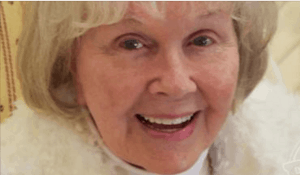 And speaking of birthdays, it’s either “Happy 92nd,” or “Happy 94th” birthday to singer / actress, Doris Day. Depending on who reports it, she was born on April 3rd, 1922 or 1924. Born Doris Mary Ann Kappelhoff, she began her career as a big band singer, hitting with “Sentimental Journey” in 1945. She was soon signed to Columbia Records, turning out over 650 recordings between 1947 and 1967. Wikipedia records her first film appearance in 1948 co-starring in “Romance on the High Seas”, launching a Hollywood career that continued well into the 1960s. She was paired with the industry’s most bankable leading men. Here are just a few: Clark Gable in Teacher’s Pet (1958), Rock Hudson in Pillow Talk (1959), Lover Come Back (1961) and Send Me No Flowers (1964), Cary Grant in That Touch of Mink (1962), and James Garner in The Thrill of It All and Move Over, Darling (1963). Day was ranked the biggest box-office star, the only woman appearing on that list in the era, for four years (1960, 1962, 1963 and 1964). She was married four times. Her only son, Terry Melcher had a hit on Keener when he partnered with future Beach Boy, Bruce Johnston to record “Hey Little Cobra” as The Rip Chords. Melcher was best known as a producer for The Byrds, Paul Revere and the Raiders and the Beach Boys before his death from melanoma at the age of 62.
And speaking of birthdays, it’s either “Happy 92nd,” or “Happy 94th” birthday to singer / actress, Doris Day. Depending on who reports it, she was born on April 3rd, 1922 or 1924. Born Doris Mary Ann Kappelhoff, she began her career as a big band singer, hitting with “Sentimental Journey” in 1945. She was soon signed to Columbia Records, turning out over 650 recordings between 1947 and 1967. Wikipedia records her first film appearance in 1948 co-starring in “Romance on the High Seas”, launching a Hollywood career that continued well into the 1960s. She was paired with the industry’s most bankable leading men. Here are just a few: Clark Gable in Teacher’s Pet (1958), Rock Hudson in Pillow Talk (1959), Lover Come Back (1961) and Send Me No Flowers (1964), Cary Grant in That Touch of Mink (1962), and James Garner in The Thrill of It All and Move Over, Darling (1963). Day was ranked the biggest box-office star, the only woman appearing on that list in the era, for four years (1960, 1962, 1963 and 1964). She was married four times. Her only son, Terry Melcher had a hit on Keener when he partnered with future Beach Boy, Bruce Johnston to record “Hey Little Cobra” as The Rip Chords. Melcher was best known as a producer for The Byrds, Paul Revere and the Raiders and the Beach Boys before his death from melanoma at the age of 62.

